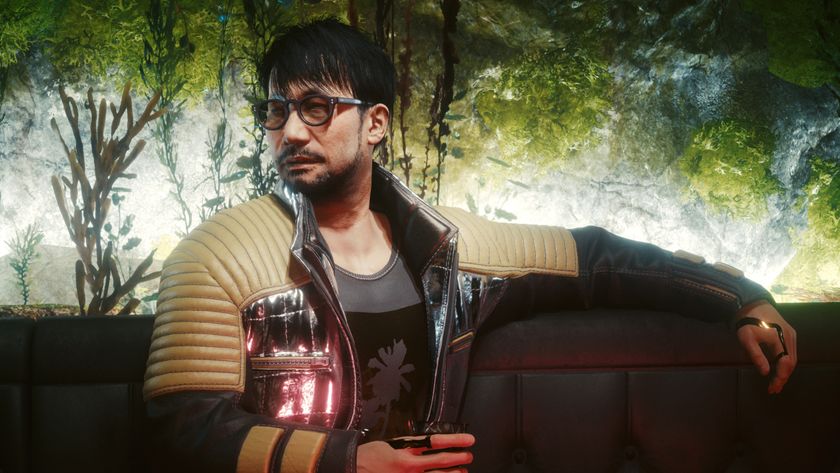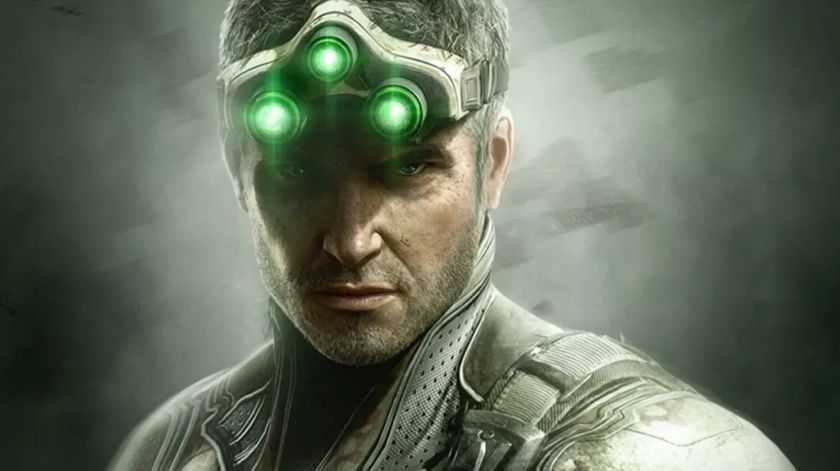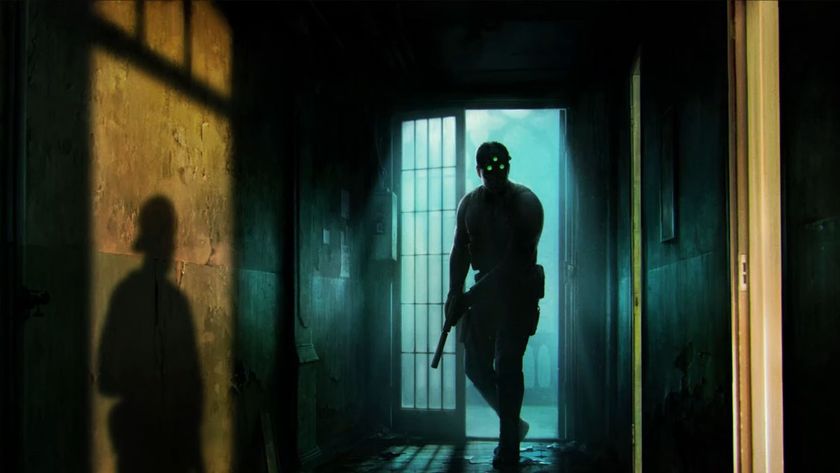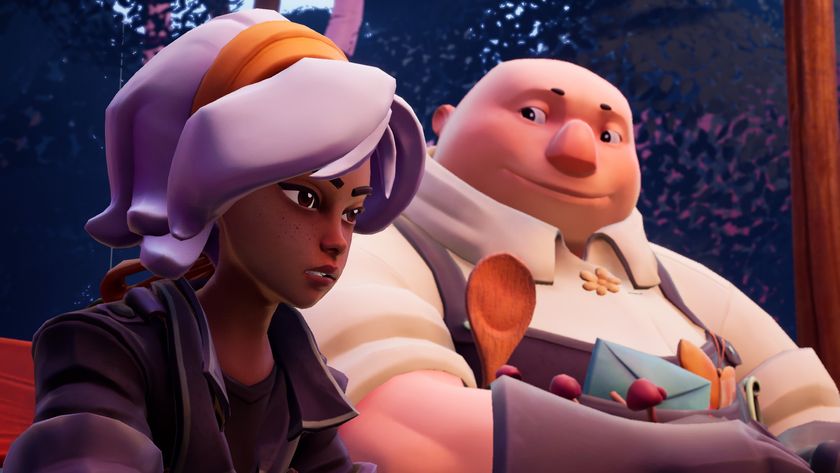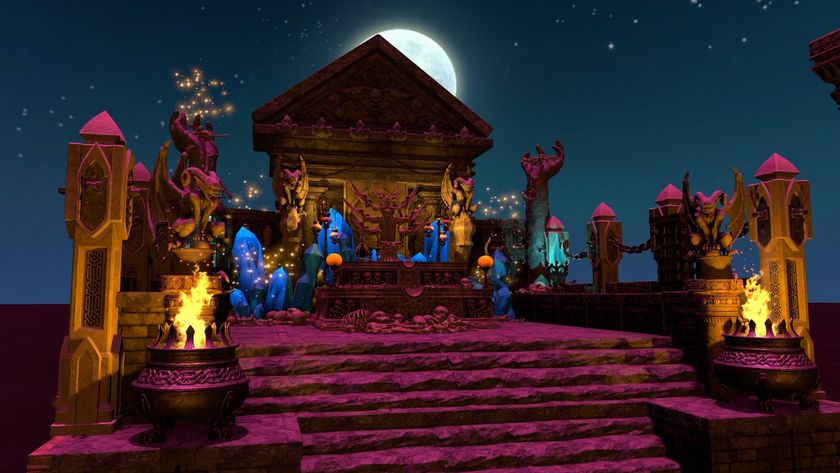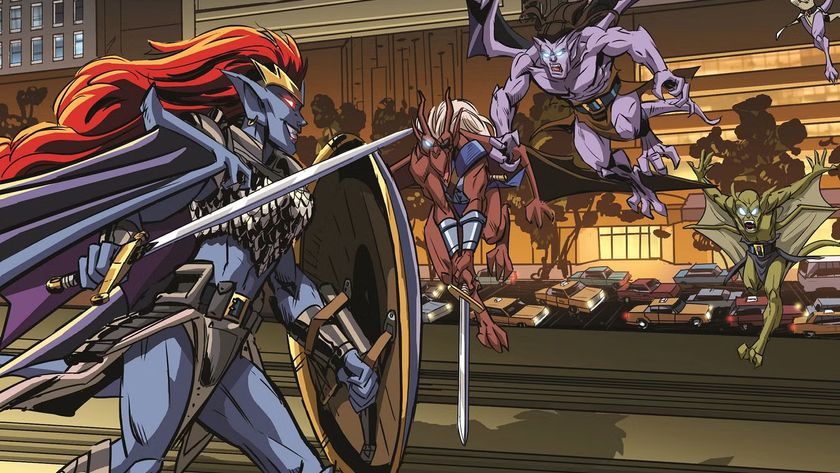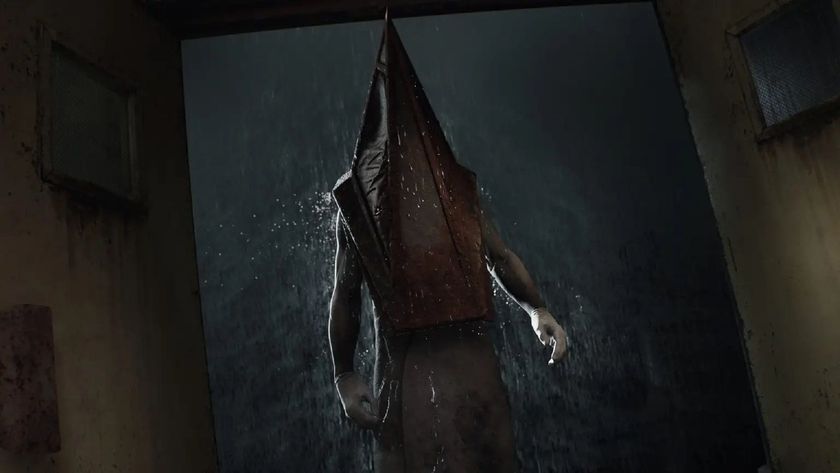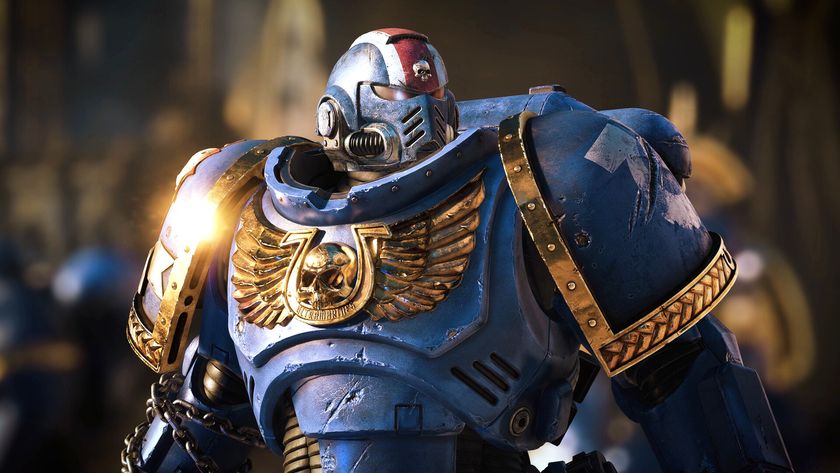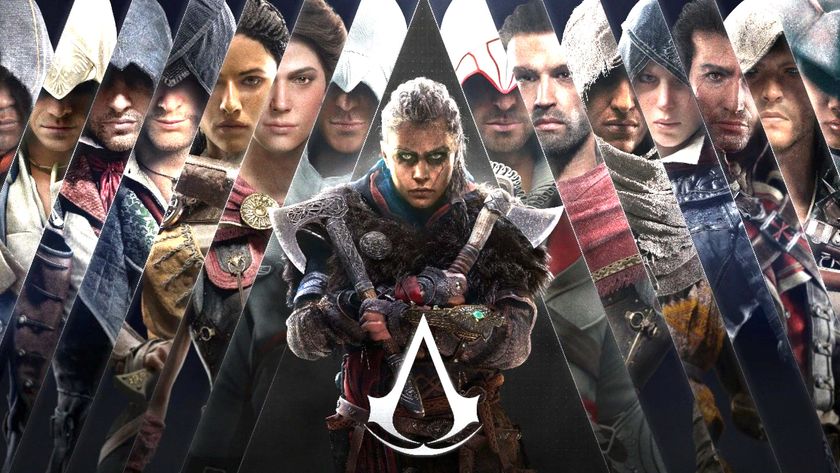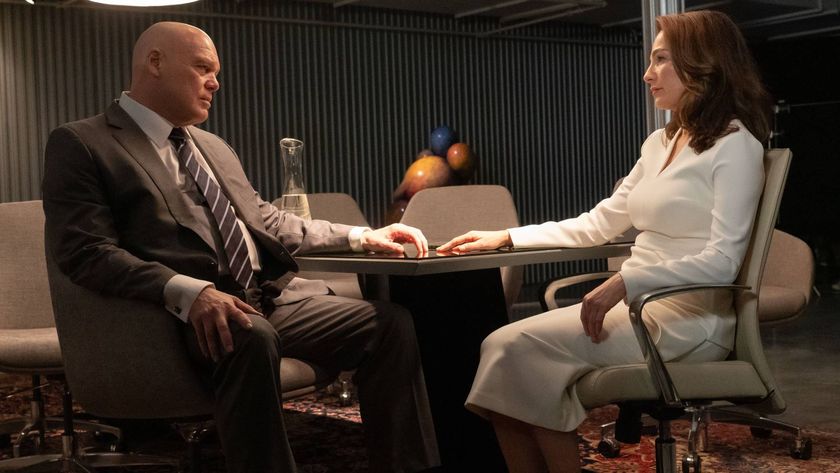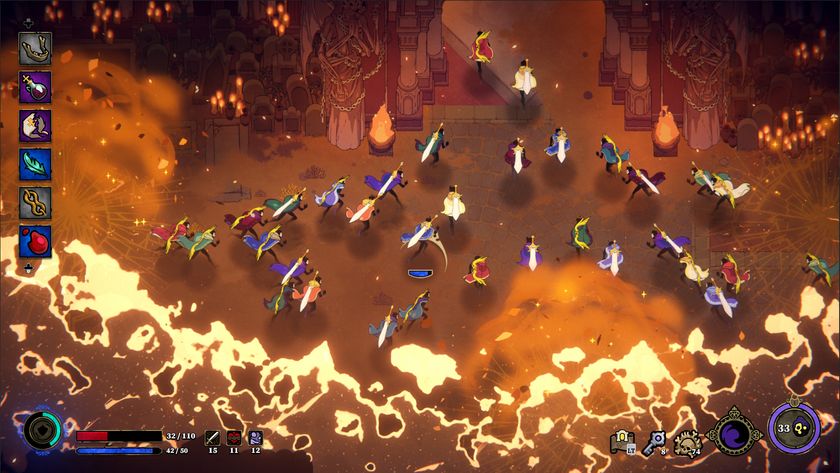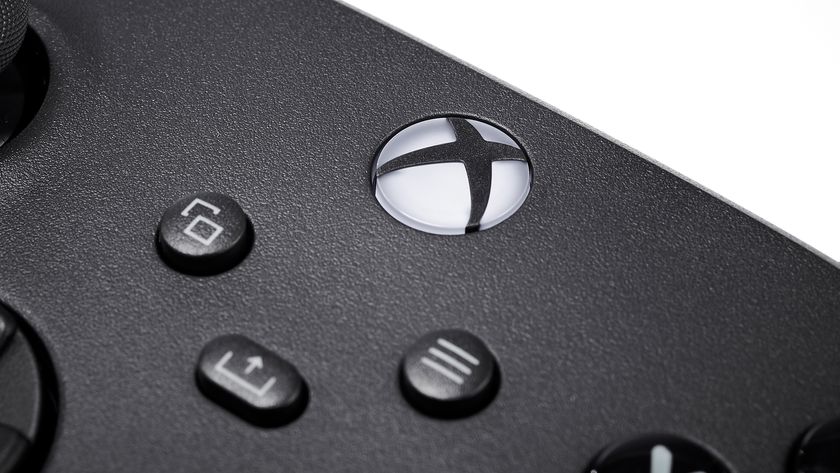Our aim has been to make the best looking PS2 game ever!" state the excited Ubisoft Splinter Cell Chaos Theory people. Already the emphatic claims are pouring out.
Picture the scene: we've just entered the top floor presentation room of the developer's Montreal studio, and are now gazing up at a large projector screen which is flashing 'innovative' PS2 visual techniques in our ashen winter faces.
Outside, a furious snowstorm is settling on already iced roads, while here indoors, the temperature feels more like 50-degrees centigrade. Our fault though - we knew we shouldn't have sat directly behind the now furnace-like projector. Our burning brow begins to drip sweat. So hot, so tired...
Then suddenly - BANG! The graphical presentation has switched from lifeless images and Sam Fisher has just blasted out an outdoor ship light. A panicky guard is spinning round like an arachnophobic who's spotted a tarantula scuttling across the floor. "Who's there? I know you're there! Show yourself!" he yells.
Fisher, though, perfectly blended into the darkness, hovers patiently, waiting for his adversary to stumble by. He does. The enemy is yanked into the foreboding black pit of the cargo ship's top deck and... SWOOSH! There's a knife rammed into his neck. "Ooh," we say. "That's painful."
That's round one. Then it's on to a demo of some of Fisher's upgraded inventory. We're perched precariously inside the ship. It's cold, shadowy, eerie...
Sign up to the GamesRadar+ Newsletter
Weekly digests, tales from the communities you love, and more
Our new surveillance-style sticky camera is launched high up onto a wall to reveal two guards patrolling a corridor above. So we climb up, hanging over the side of a railing, waiting for them to pass and then - YANK - one hapless felon is pulled over the side and down into the abyss below.
"YAAAAARRRGGGHHH!!!" he screams. "Ho ho," we chuckle.
Then it's another leap up (Jackie Chan, would be jealous), a throw of a sticky shocker (cue electrified guard) and we're into the main room, crawling behind desks, capturing the petrified captain, dragging him outside to interrogate him... oh yes, Splinter Cell is back.
OK, Splinter Cell. Been there, seen it, stained the T-shirt. We hear your worries, but hold on a second. There really are several improved factors with the potential to push Chaos Theory into unexplored realms of the stealth genre.
In addition to the arrival of new spy gadgetry, Fisher's attack armoury has been upped a notch too. He can now incapacitate foes with silent knee strikes or exterminate them with a single front swipe of the blade.
There's also a cool vampire-type attack where passers-by are hauled up by their heads (assuming you're hanging overhead, that is) and either choked mid-air or neck-snapped to death.
Other gadgets? As revealed, sticky cameras bring greater strategic play to proceedings, allowing Fisher to spot enemies lurking round tricky corners. There's also an OCP gun - similar to the one featured in Atari's Mission Impossible game - for cracking electronic systems.
Add in gas grenades and customisable gun attachments (noisy sniper rifles to stealth launchers), and it all amounts to possibly the most free Splinter Cell offering yet.
"It's about meaningful choices," creative director/script writer Clive Hocking confirms. "Like whether you pick the lock on the door or smash it with the knife and what happens next because of your actions. All the way through, it's small choices, large repercussions."
Right, so it potentially plays well, But what about the so-called "exuberant visual mechanics" the team is promoting, eh? Well, trust us, they carry almost as much fine detail as a Michelangelo masterpiece.
As well as revising the AI system from scratch (guards still seem oblivious to the lamp on Fisher's head, though), they were also keen to promote the new 'geotexturing' technique (3D images tiled onto 2D surfaces for extra detail), ragdoll physics, sophisticated reflections and refractions and excellent water effects.
We even enjoyed a quick paddle during an Asian-themed level and got so convinced that we requested a towel.
But that aside, what had us engrossed was the bloody damn hard co-operative story. It's an exciting addition which runs as a separate mission parallel to the main storyline.
You'll like it 'cos its similar to the single-player experience, but with amended level design to ensure completion is impossible for anyone tackling it by their lonesome.
For example, during an infiltration of a building, an out-of-reach window proved reachable thanks to the 'team-up' human ladder manoeuvre; a red laser beam was easily overcome by a two-man catapult throw and disabling a surveillance camera was only achievable once our buddy grabbed the darned thing.
Add in the voice communicator system and it flows with more tension than a M. Night Shyamalan flick - one man opens the door, another shoots into it; one man explores ahead, while the other keeps watch.
You can take different routes, create diversions, tackle separate objectives. The opportunities are endless and, from what we sampled, it could actually be more fun than the single-player game. And that was, like, really good fun.
And there you have it, the new Splinter Cell game in a can. Of course, we couldn't depart into the bitter Canadian cold without one final sensationalist claim from the Ubi boys and gals. "It will be a must-own PS2 title!" one member boldly bellows as loud as his larynx will allow.
Will it? Well, let's just say the future's looking as bright as Fisher's green-glowing tri-lamp...
Splinter Cell Chaos Theory is out for PS2, Xbox, Gamecube and PC in April
